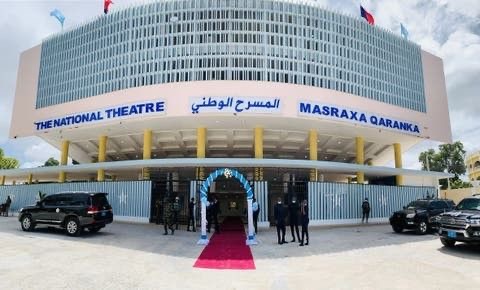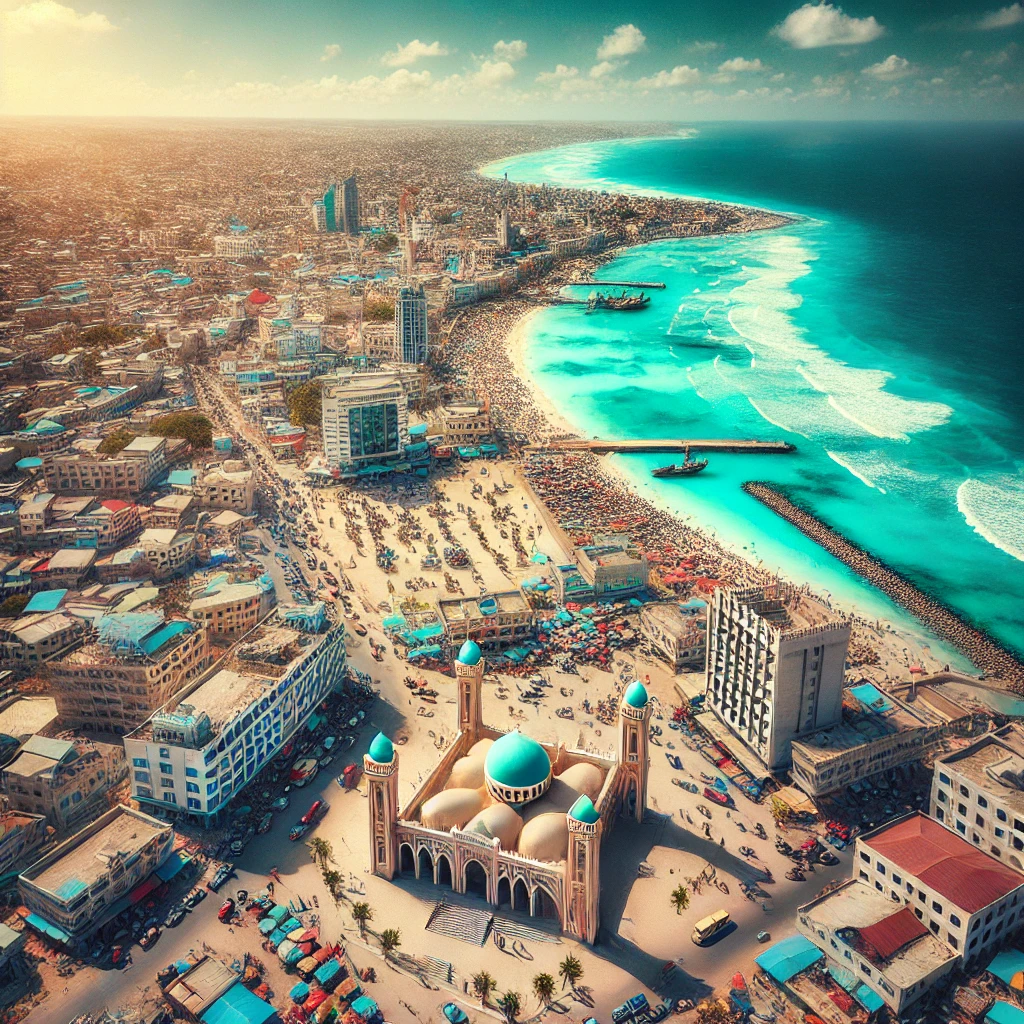The Somali National Theater:
Introduction
The Somali National Theater, located in the heart of Mogadishu, is an iconic cultural institution that has played a pivotal role in showcasing Somalia’s rich artistic and musical traditions. Established in the mid-20th century, the theater stands as a testament to Somalia’s vibrant cultural heritage and its people’s enduring love for storytelling, music, and performance.
Over the decades, the theater has been a hub for Somali creativity, hosting plays, concerts, and cultural events that celebrate the nation’s history and traditions. Despite the challenges it has faced, including periods of conflict and destruction, the Somali National Theater continues to symbolize resilience and hope for the arts in Somalia.
Historical Background
The Somali National Theater was inaugurated on April 15, 1967, during a period of cultural renaissance in post-independence Somalia. Built with the support of the Chinese government, the theater was envisioned as a space where Somalis could celebrate their heritage through music, dance, and drama.
In its early years, the theater was a thriving cultural center, attracting audiences from across the country. It became a platform for Somali playwrights, musicians, and actors to showcase their talent and tell stories that resonated with the Somali people. The performances often explored themes of love, family, and social change, as well as the struggles and triumphs of the Somali nation.
During the 1970s and 1980s, the theater gained international recognition for its role in promoting Somali arts and culture. It became a symbol of national pride, drawing visitors from around the world who were eager to experience the country’s unique artistic traditions.
Architectural Design and Features
The Somali National Theater is a striking example of mid-20th-century architecture, blending modern design elements with cultural influences. The building’s spacious auditorium was designed to accommodate large audiences, with seating for up to 1,000 people. The stage was equipped with state-of-the-art lighting and sound systems, making it a versatile venue for a wide range of performances.
The theater also featured rehearsal rooms, dressing rooms, and administrative offices, making it a functional and dynamic space for artists and staff. Its location in Mogadishu placed it at the cultural and social heart of the nation, further enhancing its significance as a hub for the arts.
Cultural Significance
The Somali National Theater has always been more than just a performance venue. It has been a place where Somalis come together to celebrate their shared heritage and express their collective identity. Through its plays, concerts, and other events, the theater has served as a mirror of Somali society, reflecting its values, struggles, and aspirations.
The theater was instrumental in nurturing some of Somalia’s most celebrated artists, including legendary singers, poets, and playwrights. It also played a crucial role in preserving and promoting Somali oral traditions, such as poetry and storytelling, which have been central to the country’s culture for centuries.
For many Somalis, the theater is a source of nostalgia, evoking memories of a time when the arts flourished and Mogadishu was known as a vibrant cultural capital.
Challenges and Setbacks
The Somali National Theater’s journey has not been without challenges. The outbreak of civil war in the early 1990s led to widespread destruction and the closure of many cultural institutions, including the theater. The building suffered extensive damage, and much of its infrastructure was destroyed.
For decades, the theater remained in ruins, a stark reminder of the country’s struggles. However, even during these difficult times, the spirit of Somali art and culture persisted, with artists continuing to perform and create in makeshift venues and among the diaspora.
Restoration Efforts
In recent years, there has been a renewed focus on restoring the Somali National Theater as part of broader efforts to rebuild the country’s cultural and social infrastructure. Recognizing the importance of the theater as a symbol of national pride, the Somali government, with support from international partners, launched initiatives to rehabilitate the building and revive its role as a cultural hub.
In 2012, the theater reopened after a period of restoration, marking a significant milestone in Somalia’s recovery. Although challenges remain, the reopening was a powerful statement of resilience and a testament to the enduring importance of the arts in Somali society.
Since its reopening, the theater has hosted a variety of events, including concerts, plays, and cultural festivals, attracting audiences from across the country. Efforts to further enhance the facility and expand its programming are ongoing, with the goal of making it a world-class venue for the arts.
Future Prospects
The Somali National Theater holds immense potential as a cultural and educational institution. By continuing to invest in its restoration and development, Somalia can ensure that the theater remains a vibrant space for creativity and expression. Plans for the future include:
- Expanding Educational Programs: Offering workshops and training for aspiring artists, musicians, and playwrights.
- Fostering International Collaborations: Partnering with artists and organizations from around the world to bring diverse performances to Somali audiences.
- Promoting Cultural Tourism: Positioning the theater as a key attraction for visitors interested in exploring Somalia’s rich cultural heritage.
As the theater continues to grow, it has the potential to inspire a new generation of Somali artists and serve as a beacon of hope and creativity in the country.
Conclusion
The Somali National Theater is a symbol of the resilience, creativity, and unity of the Somali people. Despite the challenges it has faced, the theater remains a vital part of the nation’s cultural heritage and a testament to the enduring power of the arts.
As Somalia continues to rebuild and move forward, the Somali National Theater stands as a reminder of the country’s rich history and its bright future. It is not just a building, but a beacon of hope and inspiration, showcasing the strength and spirit of the Somali people through the universal language of art.



